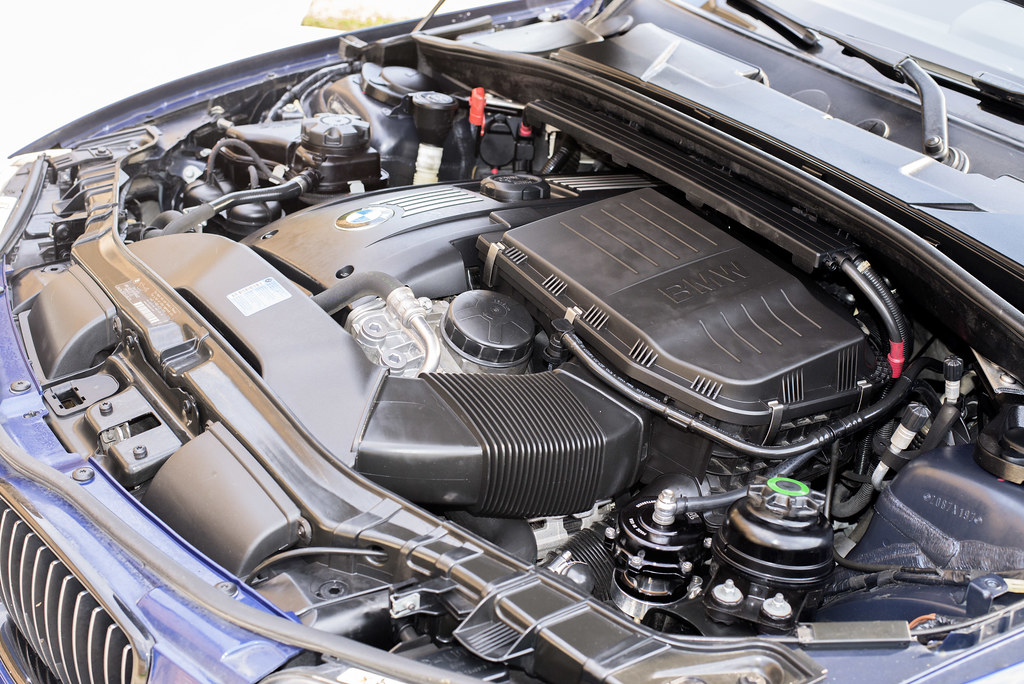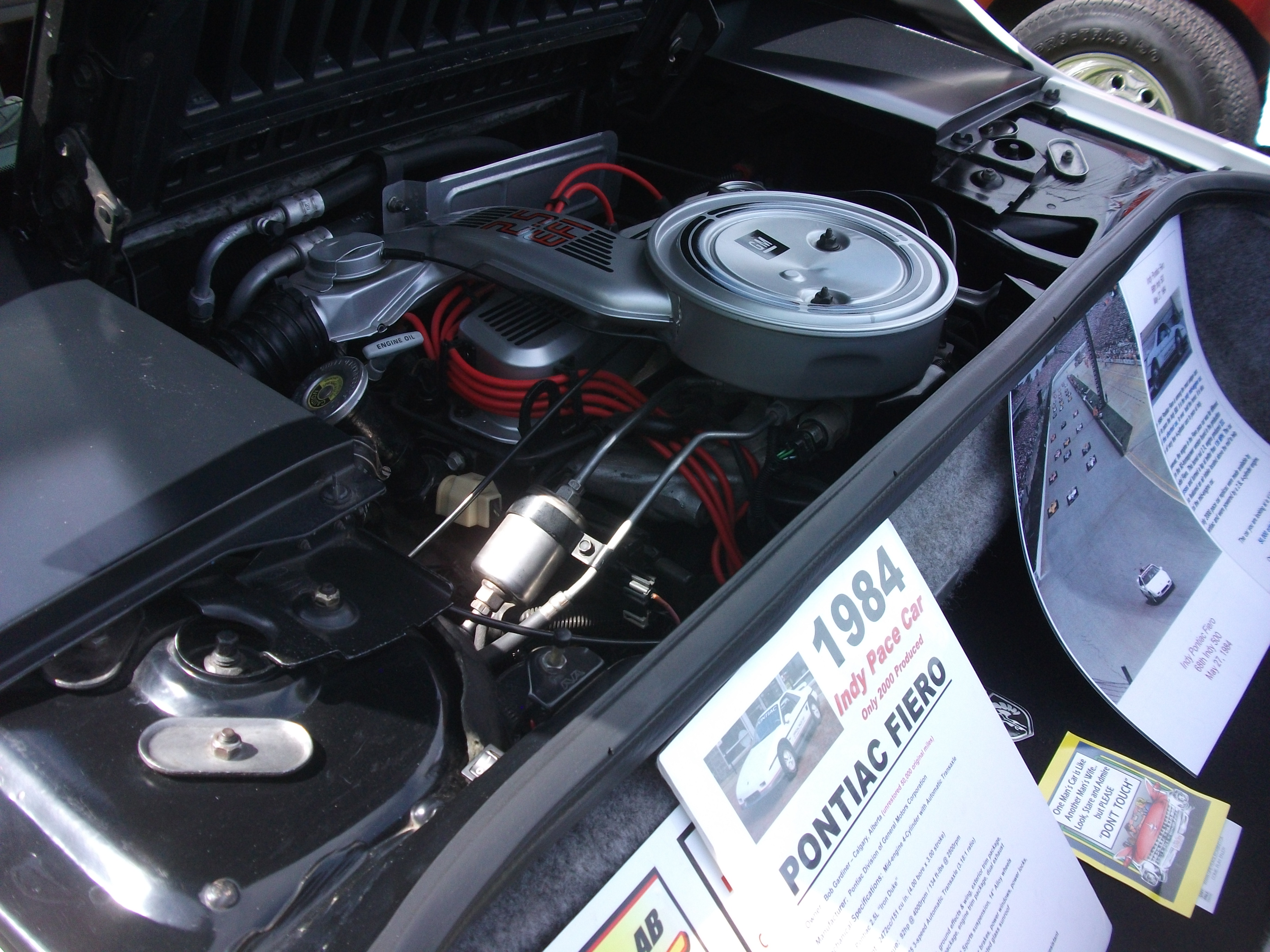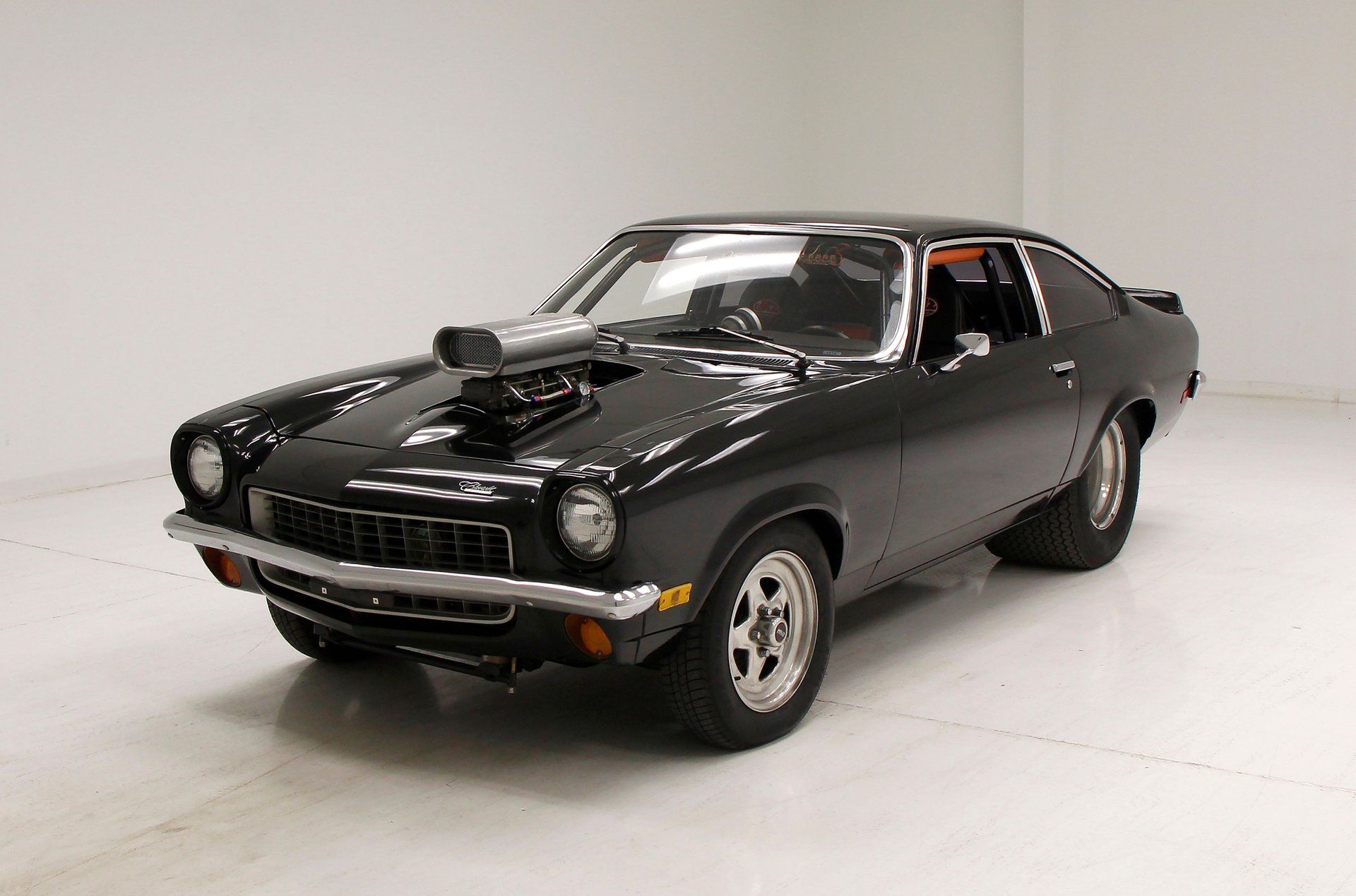
America has undeniably shaped the global automotive landscape with its innovations, powerhouses, and iconic designs. From the open road cruisers of the 1950s to the muscle car legends of the 1960s, the ingenuity and ambition of American engineering have often led the way, capturing the imagination of enthusiasts and everyday drivers alike. Yet, for every resounding success story, there lurks a cautionary tale, a vehicle that, despite its intentions, tumbled into the abyss of automotive infamy, leaving a trail of frustrated owners and tarnished reputations.
These are not merely vehicles that missed their mark; they are case studies in design compromise, engineering miscalculations, and manufacturing shortcuts that, in hindsight, offer invaluable lessons for the industry. Our journey into the past isn’t an exercise in mere ridicule, but rather an in-depth exploration, leveraging expert knowledge to dissect where these once-promising machines veered catastrophically off course. It’s an opportunity to understand the broader industry trends and economic pressures that sometimes forced manufacturers into choices that would later haunt them.
So, prepare to traverse a landscape of metal, rust, and dashed hopes as we critically evaluate some of the most lamentable chapters in American automotive history. We’ve tapped into the collective memory of enthusiasts, and their candid recollections provide a vivid tapestry of the challenges, disappointments, and outright failures that defined these vehicles. Pour a beverage, settle in, and join us as we revisit the initial trio of contenders for the title of ‘Worst American Car Ever Made,’ dissecting their flaws with the objective, authoritative lens they deserve.

1. **The Chevrolet Vega: A Rusting, Oil-Burning Compromise of the Fuel Crisis Era**The Chevrolet Vega arrived on the scene during a pivotal moment in American automotive history, a period defined by the burgeoning fuel crisis and an urgent demand for efficient, compact cars to counter the rising tide of imports. Touted as GM’s answer to this challenge, the Vega was meant to be a beacon of American ingenuity, proving that Detroit could compete in the small car segment. However, its ambitious design and production goals were tragically undermined by a litany of fundamental flaws, quickly cementing its place as a symbol of automotive disappointment rather than triumph.
One of the Vega’s most notorious failings was its alarming propensity for premature rusting. This wasn’t merely a cosmetic issue; the car’s body panels and structural components began to corrode at an accelerated rate, often within just a few years of purchase. This rapid deterioration spoke volumes about compromised material quality, inadequate rust proofing, and perhaps even design oversights that created moisture traps, rendering the vehicle’s longevity severely limited. For owners, it meant watching their new investment visibly decay before their eyes, a profound betrayal of trust and an immediate hit to the car’s aesthetic appeal and resale value.
Beyond its structural fragility, the Vega’s engine—a 2.3-liter all-aluminum inline-four—was a mechanical Achilles’ heel. It was infamous for consuming oil with an insatiable appetite, described by one bitter owner as drinking “oil like a two-stroke.” This egregious oil consumption was often attributed to piston ring issues and poor cylinder sealing, leading to owners needing to carry a case of oil in the trunk just to top off the engine at every fuel stop, transforming routine commutes into a constant vigil. Such a fundamental flaw not only meant exorbitant running costs but also signaled a glaring engineering misstep that severely compromised the engine’s reliability and lifespan.
Further compounding the Vega’s issues was a curious and ultimately misguided design choice: a “stupid sealed air cleaner.” While perhaps intended to streamline maintenance or improve emissions, this feature became a symbol of the car’s broader disconnect between engineering ambition and practical reality. It restricted access, likely hindered engine performance, and frustrated mechanics and owners alike who found even basic air filter replacements an unnecessary ordeal. This detail, seemingly minor, underscored a pattern of design decisions that prioritized manufacturing expediency over durability, owner convenience, and long-term satisfaction.
The bitterness felt by some owners, exemplified by the sentiment of trading in a robust ’69 Chevelle SS 396 for a Vega during the gas crisis, highlights the profound disappointment. The Vega wasn’t just a bad car; it was a devastating downgrade for many, forcing them from vehicles renowned for power and reliability into an unreliable, rust-prone, and thirsty compact that failed spectacularly to deliver on its promise of economical and dependable transport. Its legacy is a stark reminder of the perils of rushed development and a lack of stringent quality control, forever etching its name into the annals of American automotive misses.
Car Model Information: 1976 Chevrolet Vega
Name: Chevrolet Vega
Caption: 1971 Chevrolet Vega
Aka: Vega 2300
Manufacturer: Chevrolet
Production: 1970–1977
ModelYears: 1971–1977
Assembly: Lordstown, Ohio
Predecessor: Chevrolet Corvair
Successor: Chevrolet Monza
Class: Subcompact car
BodyStyle: notchback,hatchback,station wagon,Panel van
Layout: FR layout
Platform: GM H platform (RWD)
Engine: {{cvt,2.3,L,cuin,0,Chevrolet 2300 engine
Transmission: manual transmission,4-speed manual,overdrive (mechanics),Torque-Drive 2-speed Powerglide requiring manual shifting,Powerglide,Turbo-Hydramatic
Wheelbase: cvt
Length: cvt
Width: cvt
Height: cvt
Weight: cvt
Related: Pontiac Astre,Chevrolet Monza,Pontiac Sunbird#First generation (1976–1980),Buick Skyhawk#First generation (1975–1980),Oldsmobile Starfire#Second generation (1975–1980)
Designer: Bill Mitchell (designer)
Categories: 1970s cars, All articles needing additional references, All articles with unsourced statements, Articles needing additional references from July 2023, Articles with short description
Summary: The Chevrolet Vega is a subcompact automobile manufactured and marketed by GM’s Chevrolet division from 1970 until 1977. Available in two-door hatchback, notchback, wagon, and sedan delivery body styles, all models were powered by an inline four-cylinder engine designed specifically for the Vega, with a lightweight aluminum alloy cylinder block. The Vega first went on sale in Chevrolet dealerships on September 10, 1970. Variants included the Cosworth Vega, a short-lived limited-production performance version introduced spring 1975.
The Vega received the 1971 Motor Trend Car of the Year. Subsequently, the car became widely known for a range of problems related to its engineering, reliability, safety, propensity to rust, and engine durability. Despite numerous recalls and design upgrades, Vega’s problems tarnished its reputation and that of General Motors. Production ended with the 1977 model year.
The car was named for Vega, the brightest star in the constellation Lyra.
Get more information about: Chevrolet Vega
Buying a high-performing used car >>>
Brand: Chevrolet Model: Vega
Price: $30,000 Mileage: 82,344 mi.

2. **GM’s Diesel Sedans of the 1980s: A Premature Plunge into Unreliable Power**The early 1980s presented American automakers with a new set of challenges, predominantly stemming from tightening emissions regulations and a renewed focus on fuel efficiency. General Motors, eager to compete with European manufacturers and capitalize on the perceived advantages of diesel technology, embarked on an ambitious but ultimately catastrophic venture into diesel passenger cars. Their lineup of diesel sedans, including the fifth-generation Buick LeSabre, the fourth-generation Chevy Malibu, and the seventh-generation Pontiac Bonneville, promised economy but delivered a deeply flawed ownership experience, casting a long shadow over GM’s reputation for years to come.
The core of the problem lay in GM’s engineering approach. Rather than developing purpose-built diesel engines from the ground up, the company opted for a cost-saving shortcut: converting existing gasoline V8 engines into diesels. This involved modifying gasoline engine blocks, which were not inherently designed to withstand the significantly higher compression ratios and stresses inherent to diesel operation. The result was a series of engines plagued by structural weaknesses, including head bolt failures, cracked cylinder heads, and crankshaft issues, all symptoms of an engine ill-suited for its new application. This fundamental design flaw led to rampant unreliability and frequent, costly repairs.
Owners of these GM diesel sedans quickly discovered that the promised fuel economy benefits were often overshadowed by chronic mechanical problems. The engines were known for hard starting in cold weather, frequent stalling, and a generally poor level of refinement compared to their gasoline counterparts. These issues not only severely impacted drivability but also fostered a deep sense of frustration and mistrust among consumers who had invested in what they believed was a technologically advanced and economical vehicle. The widespread failures became a public relations nightmare, contributing significantly to a lasting public skepticism about diesel technology in the American market.
Furthermore, the performance characteristics of these diesel powerplants were often underwhelming. While diesels are known for their torque, GM’s offerings frequently felt sluggish and unrefined, especially when paired with automatic transmissions of the era. This lack of smooth, responsive power further detracted from the driving experience, making these vehicles “pretty bad to own or drive,” as one observer succinctly put it. The combination of dismal reliability and lackluster performance meant that these cars failed on multiple fronts, neither delivering the robust economy of a true diesel nor the smooth operation of a gasoline engine.
The impact of GM’s 1980s diesel misadventure was far-reaching, arguably setting back the adoption of diesel passenger cars in the United States by decades. It taught the industry a harsh lesson about the importance of dedicated engineering and rigorous testing, rather than attempting to adapt existing platforms to new, demanding applications. These diesel sedans became cautionary tales, illustrating how a seemingly smart move to meet market demands, if executed poorly, can inflict severe damage on a brand’s credibility and consumer confidence, leaving a bitter taste that lingered for an entire generation of car buyers.
Car Model Information: 2003 Buick LeSabre Custom
Caption: 1975 Buick LeSabre Custom
Name: Buick LeSabre
Manufacturer: Buick
ModelYears: 1959–2005
Predecessor: Buick Special
Successor: Buick Lucerne
Class: Full-size car
Layout: FR layout,Front-engine, front-wheel-drive layout
Categories: 1960s cars, 1970s cars, 1980s cars, 1990s cars, 2000s cars
Summary: The Buick LeSabre is a full-size car made by the division Buick of General Motors from 1959 until 2005. Prior to 1959, this position had been retained by the full-size Buick Special model (1936–58). The “LeSabre”, which is French for “the sabre”, was Buick’s mid-level full-size sedan above the Special but below the Electra during the 1960s then remained in its market position when the Electra was replaced with the Park Avenue. The LeSabre was available as a 2-door convertible, sedan or hardtop, a 4-door sedan or hardtop and station wagon throughout its production.
Get more information about: Buick LeSabre
Buying a high-performing used car >>>
Brand: Buick Model: LeSabre
Price: $4,599 Mileage: 75,344 mi.

3. **GM’s 4-6-8 V-8s: An Overly Ambitious Attempt at Fuel Economy Through Cylinder Deactivation**As the 1970s drew to a close and the spectre of fuel scarcity continued to loom large, American automakers were under immense pressure to innovate for greater fuel efficiency. General Motors, ever a leader in engine development, sought to answer this call with a bold, high-tech solution: the “Displacement on Demand” system, colloquially known as the 4-6-8 V-8 engine. Introduced in 1981, this ambitious design aimed to achieve significant fuel savings by allowing the engine to seamlessly switch between operating on eight, six, or even four cylinders depending on the driving conditions. It was a pioneering concept, but its execution was deeply flawed, leading to an engineering marvel that was anything but marvelous to operate.
The premise was elegant: at highway speeds or under light loads, fewer cylinders are needed to propel the vehicle, thus saving fuel. The 4-6-8 system, primarily found in Cadillac models, utilized solenoids and special lifters to deactivate selected cylinders by preventing the valves from opening. In theory, this would allow a large V-8 to perform like a smaller, more economical engine when its full power wasn’t required. This was GM’s attempt at leveraging cutting-edge electronics and mechanical innovation to offer both the prestige of a V-8 and the practicality demanded by the times.
However, the sophisticated technology proved to be far too complex and unreliable for its era. The transition between cylinder modes was rarely smooth; owners frequently reported unsettling jerks, hesitations, and power surges as the engine struggled to switch cylinders. The electronic control units (ECUs) responsible for managing this intricate process were rudimentary by today’s standards and often failed to accurately assess driving conditions, leading to erratic operation. This resulted in a driving experience that was anything but luxurious or predictable, eroding the confidence of drivers in their otherwise high-end vehicles.
The chronic issues with the 4-6-8 system often meant that the car spent more time in the service bay than on the road, attempting to rectify its temperamental nature. Mechanics, often lacking the specialized knowledge and diagnostic tools to properly service these advanced engines, found themselves equally frustrated. The system’s complexity led to high repair costs and an inability to reliably restore smooth operation, prompting many owners and even dealerships to disable the cylinder deactivation feature altogether, effectively turning the engine back into a conventional (and less efficient) V-8.
Ultimately, the 4-6-8 V-8 became another stark example of an automotive innovation that was ahead of its time, but tragically underdeveloped for practical application. It represented a valiant effort to tackle a significant industry challenge, yet its poor execution contributed to making these vehicles “pretty bad to own or drive” and severely damaged GM’s reputation for technological reliability. This ambitious engine, despite its forward-thinking concept, served as a painful reminder that even the most innovative ideas must be meticulously engineered and thoroughly tested before they are unleashed upon the unsuspecting motoring public, cementing its status as one of America’s notable engineering missteps.

4. **The Iron Duke Four-Cylinder: A Performance Drain and Owner Frustration**While much of GM’s early 1980s struggles focused on ambitious, yet flawed, V8 innovations, another less glamorous, but equally problematic, engine festered in their lineup: the Iron Duke four-cylinder. This engine, succinctly and brutally labeled a ‘boat anchor’ by those who endured it, became synonymous with a vehicle experience that was ‘pretty bad to own or drive.’ It embodied a critical misstep in GM’s broader strategy to deliver economical and reliable smaller engines, instead offering a powerplant that consistently fell short of even modest expectations, dragging down numerous models throughout its tenure.
The moniker ‘boat anchor’ immediately conveys a sense of excessive weight and a profound lack of utility. For an engine, this translates directly into crippling performance. Rather than providing brisk acceleration or efficient cruising, the Iron Duke often felt as though it was actively resisting forward motion, demanding excessive effort just to maintain speed. This inherent sluggishness was not merely an inconvenience; it fundamentally compromised the driving dynamics of any vehicle it powered, transforming what should have been an accessible and nimble compact car into a frustratingly underpowered machine that struggled even with basic tasks like merging onto highways or climbing modest inclines.
Beyond its anemic performance, the Iron Duke’s contribution to making a car ‘pretty bad to own or drive’ extended to its refinement—or stark lack thereof. Engines burdened by excessive weight and rudimentary design often manifest in harsh vibrations, an unpleasantly loud operational character, and a general sense of mechanical protest. These traits would have permeated the passenger cabin, diminishing comfort and turning routine commutes into an exercise in endurance rather than ease. Such a lack of sophistication underscored a fundamental disconnect between what drivers expected from a modern powerplant and what this outdated design delivered, eroding owner satisfaction with every mile.
Moreover, the ‘boat anchor’ designation can also subtly hint at reliability woes, as engines that are fundamentally flawed in their design or material often struggle with long-term durability. While the specific issues of the Iron Duke are not detailed in the context, the collective sentiment of it making any vehicle ‘pretty bad to own or drive’ strongly suggests that reliability was a persistent thorn in the side of owners. Mechanical problems, frequent repairs, or simply the constant worry of potential failure would undoubtedly contribute to an ownership experience deemed ‘pretty bad,’ further cementing the engine’s unfortunate legacy in the annals of American automotive disappointments and highlighting a painful lesson in under-engineering for the masses.
The continued presence of such an engine in GM’s diverse portfolio, especially during an era when foreign competitors were rapidly advancing in small-engine technology, starkly illustrates the challenges American automakers faced in consistently delivering competitive and desirable compact vehicles. The Iron Duke, by failing to provide either spirited performance or commendable refinement, inadvertently served as a benchmark for what not to do, a persistent reminder of how a single, uninspired powerplant could undermine the reputation and appeal of entire model lines, thereby making a compelling case for its inclusion among America’s worst automotive creations.

5. **The Early 2010s Dodge Dart: A Post-Merger Miscalculation Marred by Misguided Execution**Following the significant merger that created Fiat Chrysler Automobiles (FCA), the automotive world watched keenly for new offerings that would embody the strengths of both brands. The early 2010s incarnation of the Dodge Dart was positioned as a promising contender, a compact sedan envisioned to inject new life into Dodge’s smaller vehicle segment and challenge established rivals. On paper, the concept of a ‘little cheap sedan’ likely ‘sounded pretty good in the board meetings post-FCA merger,’ a strategic move to tap into a high-volume, economy-focused market segment with a car that could blend American design sensibility with potentially more refined European underpinnings.
However, the journey from boardroom concept to production reality often presents formidable challenges, and for the Dart, this transition proved catastrophic. The pervasive sentiment that ‘the engineers had to be made to work on this thing at gunpoint’ vividly paints a picture of a development process fraught with compromise, internal resistance, and perhaps even a lack of genuine conviction among those tasked with its creation. This isn’t merely a casual observation; it suggests that fundamental decisions regarding design, material selection, and engineering solutions were potentially driven by external pressures or budgetary constraints rather than a commitment to automotive excellence, leading to a vehicle that felt like a reluctant amalgamation of parts rather than a cohesive, well-engineered whole.
The consequences of this apparently forced development were quickly felt, not just by the production teams, but crucially, by the dealer network. The stark admission that ‘lord knows the dealers wanted nothing to do with it’ speaks volumes about the Dart’s inherent flaws and market struggles. Dealers are on the front lines, directly interacting with customers, and their reluctance to engage with a particular model typically stems from a litany of issues: poor initial quality, a barrage of customer complaints, difficulty moving inventory, or perhaps a widespread understanding that the vehicle simply couldn’t compete on crucial metrics like reliability, performance, or overall value. This lack of dealer enthusiasm acted as a significant impediment to sales and further amplified the Dart’s negative reputation.
For the consumers who did take a chance on the new Dart, the experience was often far from ideal. Whether it was persistent mechanical gremlins, a perceived lack of quality in the interior, underwhelming performance from its various powertrain options, or simply a generic driving experience that failed to excite, the car struggled to carve out a positive niche. The initial promise of an accessible, modern compact car quickly evaporated under the weight of its practical shortcomings, leading to widespread dissatisfaction that fed back into the narrative of a car designed without genuine passion or meticulous attention to detail.
The most damning evidence of the Dodge Dart’s failure is encapsulated in its remarkably brief tenure on the market; the vehicle ‘lasted for just three years in the U.S. as a result of all its issues.’ This short production run is a stark indicator of its inability to gain traction with consumers and overcome its fundamental problems. It represents a significant financial and reputational setback for Dodge and FCA, demonstrating how a car conceived with strategic intent can unravel entirely through flawed execution and a failure to listen to the critical feedback from engineers, dealers, and ultimately, the buying public. The Dart remains a potent cautionary tale of ambitious plans undermined by a compromised reality.
Car Model Information: 2015 Dodge Dart SXT
Name: Dodge Dart
Caption: 1966 Dodge Dart GT 2-door hardtop
Manufacturer: Dodge
Production: 1959–1976 (US market)
ModelYears: 1960–1976 (US market)
Class: Full-size
Layout: FR layout
Predecessor: Dodge Coronet#Fourth generation (1957–1959)
Related: Plymouth Valiant,Chrysler Valiant,Dodge Phoenix
Successor: Dodge Aspen,Dodge Diplomat,Talbot Tagora
Categories: 1970s cars, All articles with unsourced statements, Articles with short description, Articles with unsourced statements from December 2023, Articles with unsourced statements from May 2025
Summary: The Dodge Dart is a line of passenger cars produced by Dodge from the 1959 to 1976 model years in North America, with production extended to later years in various other markets.
The production Dodge Dart was introduced as a lower-priced full-size model in 1960 and 1961, but became a mid-size car for one model year for 1962, and was then reduced to a compact for two generations, from 1963 to 1976.
Chrysler had first used ‘Dart’ name plates on two Italian styled show cars, in 1956 and 1957, before it became a Dodge model name. The Dart nameplate was resurrected for a Fiat-derived compact car that was introduced in 2012.
Get more information about: Dodge Dart
Buying a high-performing used car >>>
Brand: Dodge Model: Dart
Price: $9,995 Mileage: 143,082 mi.

6. **The Crosley Stratoswift: An Ambitious Engine Concept Undone by Corrosive Realities**In the immediate post-war period, American innovation was buzzing, and small, economical vehicles held a particular appeal. The Crosley marque, known for its compact offerings, attempted to push the boundaries of engine design with its ‘CoBra’ (Copper Brazed) engine, prominently featured in models like the Stratoswift from 1946 to 1949. This engine was a marvel of ingenuity, consciously moving away from the conventional ‘typical cast iron or aluminum blocks and cylinder heads in its construction.’ Instead, Crosley embraced a truly novel approach, utilizing ‘stamped sheet metal that was copper brazed together.’ The theoretical benefits were clear: this method promised ‘reduced weight and possible hot spots in the engine, reducing the risk of detonation,’ indicating a forward-thinking attempt to optimize both efficiency and performance through lightweight construction and thermal management.
However, the leap from innovative concept to reliable automotive application proved to be a chasm too wide for the CoBra engine. Despite its theoretical advantages, when this pioneering design was ’employed in cars, it suffered severe corrosion and overheating issues.’ The choice of stamped sheet metal, while lightweight, apparently lacked the inherent robustness and material integrity necessary to withstand the harsh, demanding environment of an internal combustion engine in continuous operation. Corrosion, a fundamental enemy of metallic structures, would have compromised the engine’s seals and structural integrity, leading to leaks, loss of compression, and ultimately, catastrophic failure. Similarly, ‘overheating issues’ negated the promise of reduced hot spots, suggesting that the thermal dynamics of the engine were critically mismanaged or underestimated in real-world driving conditions.
The severity and persistence of these issues forced Crosley into a difficult and ultimately telling battle for reliability. As the context notes, ‘From 1946 to early 1949, Crosley attempted to make the engines reliable but gave up, introducing a traditional cast iron replacement engine that year.’ This period of intense struggle and subsequent capitulation speaks volumes about the deep-seated nature of the CoBra engine’s flaws. Abandoning a groundbreaking, unique design for a conventional ‘traditional cast iron replacement’ is an admission of defeat, a clear signal that the initial innovative premise could not be made practical or dependable within the manufacturing capabilities and engineering understanding of the time. It was a costly endeavor, both in terms of resources and time, highlighting the significant risks associated with radical departures from established automotive engineering practices.
The ripple effect of the CoBra engine’s problems extended far beyond the production line and into the public consciousness. ‘However, the CoBra engine had damaged the firm’s reputation.’ For a small, niche automaker like Crosley, reputation was paramount, and a widespread perception of unreliability could be a death knell. Early post-war buyers, eager for new cars but often wary of unproven technology after years of wartime austerity, would have been particularly unforgiving of such fundamental flaws. The betrayal of trust inherent in purchasing a new car only to find its core component fatally flawed created a lasting negative impression that proved incredibly difficult to shake off, undermining future sales and diminishing brand loyalty.
Ultimately, the ambitious Crosley Stratoswift and its CoBra engine serve as a poignant reminder that even the most innovative engineering concepts must be tempered by practical realities and rigorous testing. The inherent flaws in the engine’s material choice and thermal management led to widespread corrosion and overheating, which Crosley could not overcome despite concerted efforts. This failure not only curtailed the engine’s production but also ‘damaged the firm’s reputation, and Crosley folded its automotive efforts a fe[w years later].’ This final, truncated phrase from the context suggests the devastating impact of this single, flawed innovation, demonstrating how a pioneering misstep can lead to the complete demise of an automotive venture, solidifying its place among America’s worst, albeit most ambitiously conceived, car engines.
From the ambitious promises of fuel efficiency to the ill-conceived experiments in material science, the journey through America’s automotive missteps is more than just a roll call of failures. It’s a compelling narrative of ambition clashing with reality, of innovation outpacing practicality, and of market pressures forcing choices that often came back to haunt manufacturers and owners alike. Each vehicle, from the rusting Vega to the corroding Stratoswift, stands as a testament to invaluable lessons learned, often the hard way. These cars, though maligned, serve as vital footnotes in the grand tapestry of American automotive history, reminding us that even in the pursuit of greatness, the road to improvement is frequently paved with the ‘worst’ of intentions and the ‘worse’ of executions. They underscore the relentless pursuit of perfection, a journey that, while occasionally stumbling, ultimately pushes the industry forward towards a future where such missteps become increasingly rare, and the open road remains a testament to enduring quality.




